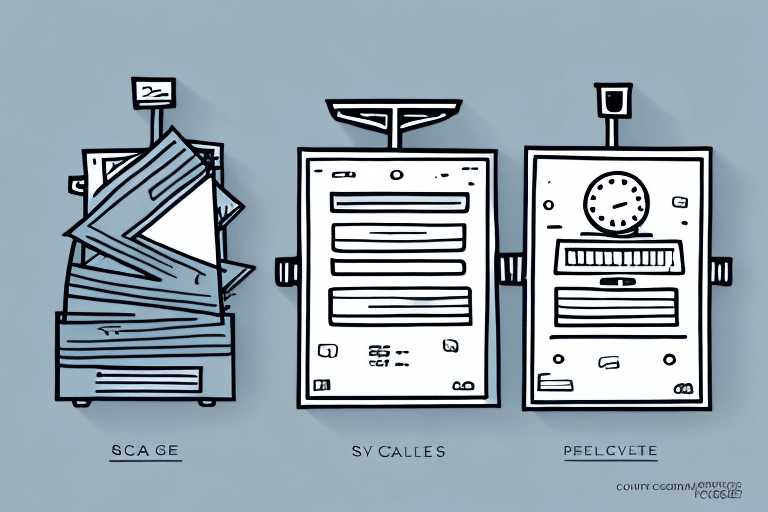Which is Cheaper to Ship: UPS or USPS?
When it comes to shipping goods, one of the primary concerns for businesses is the cost. Shipping fees can eat into profits and affect the bottom line. That's why it's essential to find a reliable and cost-effective shipping carrier. In this article, we'll dive into the differences between two popular shipping carriers: UPS and USPS, and help you determine which one is cheaper for your needs.
Factors to Consider When Choosing a Shipping Carrier
Before comparing shipping rates between UPS and USPS, it's essential to consider several critical factors that may influence your decision:
- Package Size and Weight Restrictions: Different carriers have varying limitations on package dimensions and weight.
- Shipping Speed and Delivery Options: Consider how quickly you need your packages delivered.
- Tracking and Insurance Options: Reliable tracking and adequate insurance can provide peace of mind.
- Customer Service: Quality of customer support can significantly impact your shipping experience.
- Hidden Fees and Surcharges: Additional costs can add up, so it's essential to be aware of any extra charges.
Understanding these factors will help you evaluate which carrier is the best fit for your business needs.
Another important consideration is the destination of your package. Some carriers offer better coverage and service in certain areas, while others may have limited reach. Ensure that your chosen carrier can reliably deliver to your desired locations and check for any regional restrictions or limitations.
Additionally, don't forget to factor in the total cost of shipping, including any additional expenses such as packaging materials or customs fees for international shipments. Calculating the overall cost will help you make a more informed decision.
Comparing Shipping Rates Between UPS and USPS
When comparing shipping rates between UPS and USPS, it's important to recognize that both carriers employ different pricing structures based on package weight, size, shape, and delivery location.
- USPS: Offers flat-rate shipping options that are often more economical for smaller packages. For instance, the USPS Priority Mail Flat Rate box is popular among small businesses for its predictable pricing regardless of weight.
- UPS: May provide more competitive pricing for larger packages or long-distance shipments. UPS's rates can be advantageous for heavy or bulk shipments due to their tiered pricing system.
According to the USPS annual revenue report, USPS generated approximately $83 billion in revenue in 2022, highlighting its significant role in the shipping industry. UPS reported revenues of over $100 billion in the same year, indicating their extensive service offerings.
Ultimately, the best way to determine which carrier offers a cheaper rate for your specific shipment is to compare rates using both UPS and USPS's online calculators:
Shipping Speeds and Delivery Options
Both UPS and USPS offer a variety of shipping speeds and delivery options to cater to different business needs:
USPS Shipping Options
- Priority Mail Express: Fastest domestic service, overnight to 2-day delivery.
- Priority Mail: 1-3 day delivery with flat-rate options available.
- First-Class Mail: Economical option for lightweight packages (up to 15.99 oz).
- Media Mail: Affordable option for shipping media items like books and DVDs.
UPS Shipping Options
- UPS Next Day Air: Guaranteed overnight delivery.
- UPS 2nd Day Air: Delivery within two business days.
- UPS Ground: Cost-effective option for less urgent shipments, delivery in 1-5 days.
- UPS Freight: Suitable for large, heavy shipments requiring freight services.
While USPS provides a broader range of delivery options for small and medium-sized parcels, UPS excels in offering expedited services and freight handling for larger shipments.
Tracking and Insurance Options
Reliable tracking and insurance are critical for ensuring the safety and timely delivery of your shipments.
USPS Tracking and Insurance
- Tracking: All USPS domestic shipments include tracking, allowing you to monitor your package's progress.
- Insurance: USPS offers insurance coverage up to $5,000 for domestic shipments at an additional cost.
UPS Tracking and Insurance
- Tracking: UPS provides detailed tracking information for all shipments, including real-time updates.
- Insurance: UPS includes limited liability coverage at no extra charge, with additional insurance options available for higher-value shipments.
For more comprehensive insurance needs, consider declaring a higher value for your packages with UPS’s Declared Value service, which allows for additional coverage based on the package's worth.
Customer Service Comparison
Quality customer service can significantly impact your shipping experience, especially when resolving issues or addressing inquiries.
UPS Customer Service
- Availability: UPS offers 24/7 customer service support, ensuring assistance is available at any time.
- Support Channels: Dedicated customer service representatives, comprehensive online support center, and various tools for shipment management.
- Guarantees: UPS provides a money-back guarantee on their shipping services if delivery is not on time.
USPS Customer Service
- Availability: USPS customer service is available during specific hours, which may limit accessibility.
- Support Channels: Customer service phone lines and online support center, though users may experience longer wait times.
- Guarantees: USPS does not offer a money-back guarantee but provides insurance options for package protection.
Overall, UPS tends to offer more comprehensive and readily available customer support compared to USPS.
Tips for Saving Money on Shipping Costs
Shipping costs can be a significant expense for businesses. Here are several strategies to help you save money when using UPS or USPS:
- Use Online Shipping Calculators: Compare prices using the carriers' online tools to find the most cost-effective option.
- Consolidate Shipments: Combine multiple orders into a single shipment to reduce overall shipping costs.
- Select the Right Shipping Option: Choose the most economical shipping service that meets your delivery timeframe and package requirements.
- Leverage Bulk Shipping Discounts: Take advantage of bulk shipping rates and promotions that offer lower prices for high-volume shipments.
- Utilize Flat Rate Boxes: Both UPS and USPS offer flat rate packaging options, which can be beneficial for sending heavy items without worrying about weight-based pricing.
Additionally, businesses with high shipping volumes may negotiate special rates with carriers to secure better pricing terms, resulting in significant long-term savings.
Pros and Cons of Using UPS vs USPS
Choosing between UPS and USPS depends on various factors. Here's a balanced look at the advantages and disadvantages of each carrier:
UPS Pros
- Competitive Rates for Large Shipments: UPS often offers better pricing for heavier and bulkier packages.
- Advanced Tracking System: Detailed, real-time tracking provides greater visibility over shipment status.
- Reliable Delivery Times: Guaranteed delivery schedules ensure timely arrivals, especially with expedited services.
UPS Cons
- Higher Costs for Smaller Packages: UPS may be more expensive for lightweight or small shipments compared to USPS.
- Mandatory Signature Requirement: Some services require a signature upon delivery, which can be inconvenient for recipients.
USPS Pros
- Cost-Effective for Small and Lightweight Packages: USPS offers affordable rates for smaller shipments, with flat-rate options enhancing cost predictability.
- Extensive Delivery Network: USPS delivers to every address in the United States, including P.O. boxes and remote locations.
- Variety of Shipping Options: Numerous services cater to different needs, from express delivery to economical media mailing.
USPS Cons
- Slower Delivery Times: Compared to UPS’s expedited services, USPS can have longer delivery times, especially for non-priority shipments.
- Limited Tracking for Some Services: Certain USPS services offer less detailed tracking information.
Understanding the Fine Print: Hidden Fees and Surcharges
It's crucial to be aware of additional fees and surcharges that may apply when shipping with UPS or USPS. These extra costs can impact your overall shipping budget:
- Residential Delivery Surcharge: Both carriers charge extra when delivering to residential addresses instead of commercial ones.
- Fuel Surcharges: Fluctuating fuel prices can lead to variable surcharges on shipping rates.
- Oversize Package Fees: Additional fees apply for packages that exceed standard size or weight limits.
- Address Correction Fees: Incomplete or incorrect addresses may incur fees for correction services.
Being aware of these potential fees allows you to better estimate shipping costs and avoid unexpected charges. Always review the carriers' fee schedules and consider these factors when calculating your shipping expenses.
Case Studies: Businesses Saving Money with UPS or USPS
Real-world examples demonstrate how businesses can reduce shipping costs by strategically choosing between UPS and USPS:
- Small E-Commerce Business: A boutique online store switched from UPS to USPS for shipping smaller packages. By utilizing USPS Priority Mail Flat Rate boxes, the business reduced shipping costs by nearly 50%, enhancing profit margins.
- Furniture Retailer: A company specializing in large furniture items found that UPS's ground shipping rates were more economical for oversized packages compared to USPS's dimensional weight pricing structure, leading to significant savings on bulk shipments.
These case studies highlight the importance of assessing your specific shipping needs and comparing carrier options to identify the most cost-effective solution.
Conclusion
Deciding between UPS and USPS for your shipping needs ultimately depends on your business's unique requirements. By considering factors such as package size and weight restrictions, shipping speed and delivery options, tracking and insurance capabilities, customer service quality, hidden fees, and learning from real-world case studies, you can make an informed decision. This ensures that you select the most cost-effective and reliable shipping solution to support your business operations and enhance customer satisfaction.






















